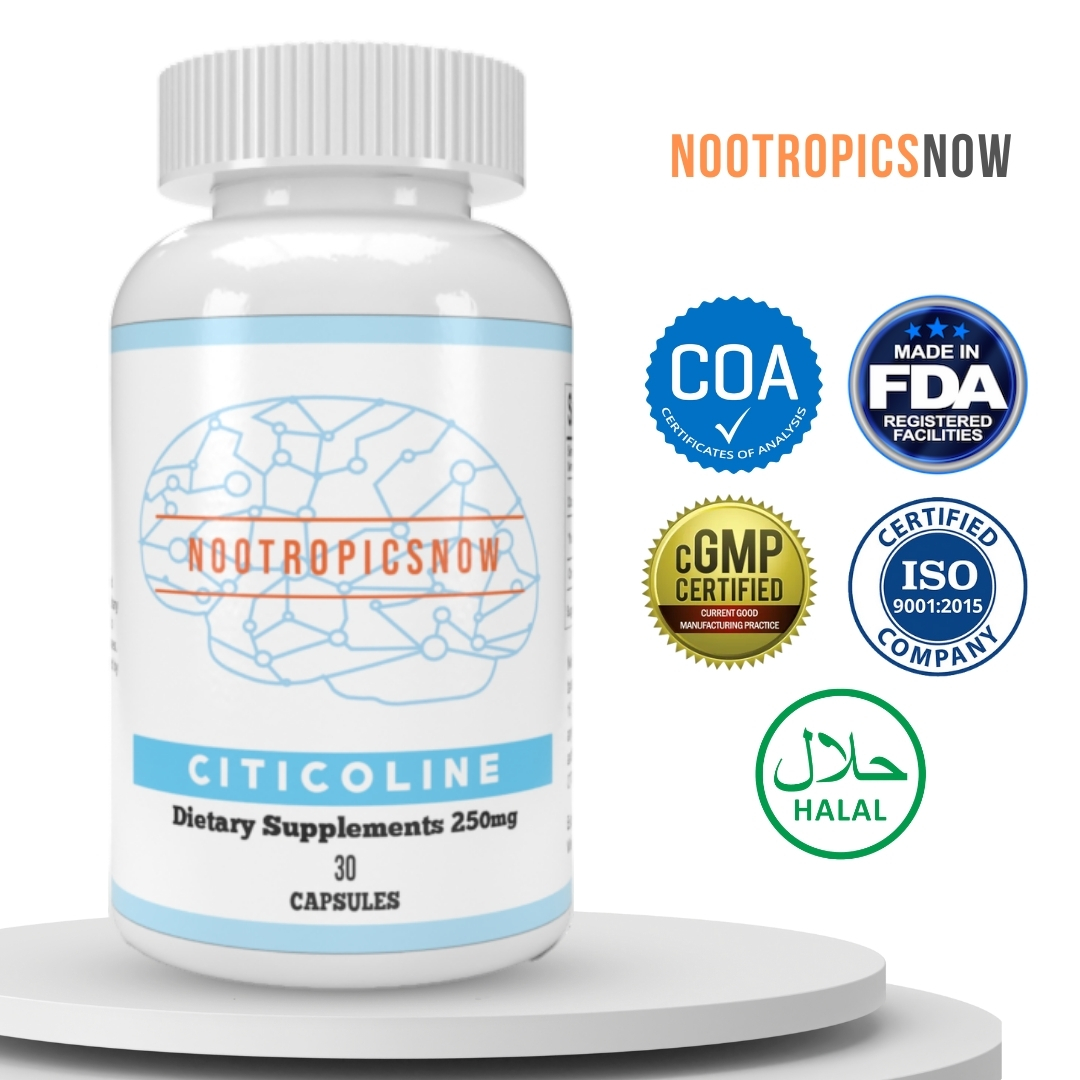Alpha GPC Half-Life: What You Need to Know

Half-Life of Alpha GPC: A Comprehensive Guide
Alpha-GPC (alpha-glycerophosphocholine) is a naturally occurring choline compound found in the brain. It’s also a cholinergic prodrug, meaning it increases the levels of acetylcholine, a neurotransmitter crucial for memory, learning, and muscle control. Because of these effects, Alpha-GPC is used as a nootropic to enhance cognitive function and sometimes as a supplement to improve athletic performance. However, understanding its pharmacokinetics, particularly its half-life, is essential for optimizing its use and maximizing its benefits. Let’s delve into the specifics of Alpha GPC’s half-life and its implications for dosage and timing.
What is Half-Life?
The half-life of a drug or supplement is the time it takes for half of the substance to be eliminated from the bloodstream. This parameter is crucial in determining how frequently a drug needs to be administered to maintain its therapeutic effects. Drugs with short half-lives need to be taken more frequently, whereas those with longer half-lives can be taken less often. Understanding the half-life is key for effective dosing strategies and avoiding potential side effects.
The Half-Life of Alpha-GPC

The half-life of Alpha-GPC is relatively short, falling within the range of approximately 4 to 6 hours. Consequently, the concentration of Alpha-GPC in the bloodstream decreases by half within this time frame. This relatively short duration impacts how users should structure their dosage schedule to maintain stable and beneficial levels of the compound throughout the day. Therefore, individuals using Alpha-GPC often find that dividing their total daily dose into multiple administrations is more effective.
Factors Affecting Alpha-GPC Half-Life
While the average half-life of Alpha-GPC is 4 to 6 hours, certain factors can influence how quickly the body metabolizes and eliminates it. These factors include:
Implications of Alpha-GPC’s Short Half-Life
The short half-life of Alpha-GPC has several practical implications for users:
Optimal Dosage Strategies for Alpha-GPC
Considering the half-life of Alpha-GPC, an optimized dosing strategy typically involves dividing the total daily dosage into multiple administrations. Here are some general guidelines:
Stacking Alpha-GPC with Other Nootropics
Alpha-GPC is often stacked with other nootropics to enhance its cognitive effects. Common stacks include:
Potential Side Effects and Precautions
While Alpha-GPC is generally considered safe, it can cause side effects in some individuals. Common side effects include:
Before using Alpha-GPC, it is important to consult with a healthcare provider, particularly if you have any underlying health conditions or are taking other medications. Individuals with bipolar disorder or a history of mania should exercise caution, as Alpha-GPC may potentially trigger manic episodes. Pregnant or breastfeeding women should avoid using Alpha-GPC due to a lack of safety data.
Conclusion
Understanding the half-life of Alpha-GPC is crucial for optimizing its use as a nootropic. Its relatively short half-life of 4 to 6 hours necessitates frequent dosing to maintain stable blood levels and consistent cognitive benefits. By dividing the daily dose into multiple administrations, timing doses with activities requiring peak performance, and carefully monitoring individual responses, users can maximize the benefits of Alpha-GPC while minimizing potential side effects. Furthermore, considering factors such as individual metabolism, age, liver and kidney function, and potential interactions with other medications and supplements can help tailor the dosage strategy for optimal results. Always consult with a healthcare provider before starting any new supplement regimen, including Alpha-GPC. While the research on Alpha-GPC continues to evolve, understanding its fundamental pharmacokinetic properties is a cornerstone of responsible and effective use.
Alpha GPC Half-Life: Understanding Its Duration and Impact
Alpha-GPC (L-Alpha glycerylphosphorylcholine) stands as a prominent nootropic compound celebrated for its potential cognitive-enhancing properties. It functions as a choline source, readily crossing the blood-brain barrier to boost acetylcholine levels. Acetylcholine, a crucial neurotransmitter, plays a key role in memory, learning, and overall cognitive function. Understanding Alpha GPC’s half-life is critical for optimizing dosage and timing to maximize its benefits.

View Product
What is Half-Life?
Half-life, in pharmacology, refers to the time it takes for the concentration of a drug or substance in the body to reduce by half. This parameter influences how frequently and in what dosage a substance should be taken to maintain its effectiveness. A shorter half-life usually means more frequent doses are necessary to keep a consistent level in the body, while a longer half-life could permit less frequent dosing. Various factors like metabolism, excretion, and distribution impact a compound’s half-life.
The Half-Life of Alpha GPC
The half-life of Alpha GPC is approximately 4 to 6 hours. This means that after ingestion, the concentration of Alpha GPC in the bloodstream decreases by half within this time frame. The relatively short half-life significantly influences dosage strategies and usage patterns.
Several studies and user experiences support this range, consistently reporting that the effects of Alpha GPC are most pronounced within a few hours after administration and gradually diminish thereafter. This characteristic necessitates a dosing strategy that accounts for its rapid metabolism and excretion.
Factors Influencing Alpha GPC Half-Life
While the general consensus places Alpha GPC’s half-life between 4 and 6 hours, individual variations can occur due to several factors:
Impact of Half-Life on Dosage Strategies
Given the 4 to 6-hour half-life, strategic dosing becomes crucial for sustained cognitive benefits. Most users find that splitting the daily dosage into multiple administrations helps maintain stable blood levels of Alpha GPC.
Recommended Dosing Schedule
A common approach involves dividing the total daily dosage into two or three administrations. For example, if the daily dosage is 600mg, one might take 200mg in the morning, 200mg in the early afternoon, and 200mg again in the late afternoon. This method helps ensure that acetylcholine levels remain consistently elevated, supporting sustained cognitive enhancement throughout the day.
Considerations for Timing
Individual Experimentation
It’s important to note that individual responses to Alpha GPC can vary. Experimenting with different dosing schedules and amounts can help identify the optimal strategy for personal needs. Keeping a detailed log of cognitive effects and any potential side effects can provide valuable insights.
Benefits of Maintaining Consistent Levels
Maintaining consistent levels of Alpha GPC through strategic dosing offers several potential benefits:
Comparison to Other Choline Sources
Alpha GPC is often compared to other choline sources, such as choline bitartrate and CDP-choline (Citicoline). Understanding their differences can help in choosing the most suitable option.
Alpha GPC vs. Choline Bitartrate
Choline bitartrate is a more common and less expensive choline source. However, it is less effective at raising choline levels in the brain compared to Alpha GPC because it doesn’t cross the blood-brain barrier as efficiently. Additionally, it has a shorter half-life than Alpha GPC, requiring even more frequent dosing.
Alpha GPC vs. CDP-Choline (Citicoline)
CDP-choline is another effective choline source that, like Alpha GPC, readily crosses the blood-brain barrier.

View Product
CDP-choline breaks down into choline and cytidine, with cytidine then converting to uridine, which has its own cognitive benefits. While both Alpha GPC and CDP-choline are effective, some users find CDP-choline to be more stimulating, while Alpha GPC provides a more balanced effect. CDP-Choline also has a longer half-life than Alpha GPC, which can be between 24-56 hours, providing longer lasting effects for some users.
Table: Comparison of Choline Sources
| Feature | Alpha GPC | Choline Bitartrate | CDP-Choline (Citicoline) |
|---|---|---|---|
| ——————- | ————————- | ————————- | ———————— |
| Blood-Brain Barrier | Yes | No | Yes |
| Half-Life | 4-6 hours | Shorter | 24-56 hours |
| Cognitive Effects | Focus, Memory | Less Pronounced | Focus, Memory, Stimulation |
| Cost | Moderate | Low | Higher |
| Additional Benefits | May enhance HGH secretion | None | Uridine Conversion |
Potential Side Effects and Mitigation Strategies
While Alpha GPC is generally well-tolerated, some individuals may experience side effects. Understanding these and implementing mitigation strategies can help ensure a positive experience.
Common Side Effects
Mitigation Strategies
Alpha GPC: Interactions and Contraindications
Before using Alpha GPC, it’s important to be aware of potential interactions with other medications and supplements, as well as contraindications.
Potential Interactions
Contraindications
Always Seek Professional Advice
If you have any underlying health conditions or are taking medications, consult with a healthcare professional before using Alpha GPC. They can assess potential risks and provide personalized recommendations.
Combining Alpha GPC with Other Nootropics
Alpha GPC is often combined with other nootropics to enhance its cognitive effects. Popular combinations include:
Example Stack:
This stack aims to enhance memory, focus, and alertness while minimizing anxiety and jitteriness.
Considerations
When combining nootropics, it’s important to start with low doses of each substance and gradually increase them as tolerated. Monitor for any adverse effects and adjust dosages accordingly.
Conclusion: Optimizing Alpha GPC Usage
Understanding the half-life of Alpha GPC is crucial for optimizing its usage and maximizing its cognitive benefits. Its relatively short half-life of 4 to 6 hours necessitates strategic dosing to maintain consistent blood levels and prevent fluctuations in cognitive performance. By considering individual factors, potential side effects, and interactions, users can safely and effectively incorporate Alpha GPC into their nootropic regimen. Always remember to consult with a healthcare professional before starting any new supplement to ensure it’s appropriate for your individual needs.




